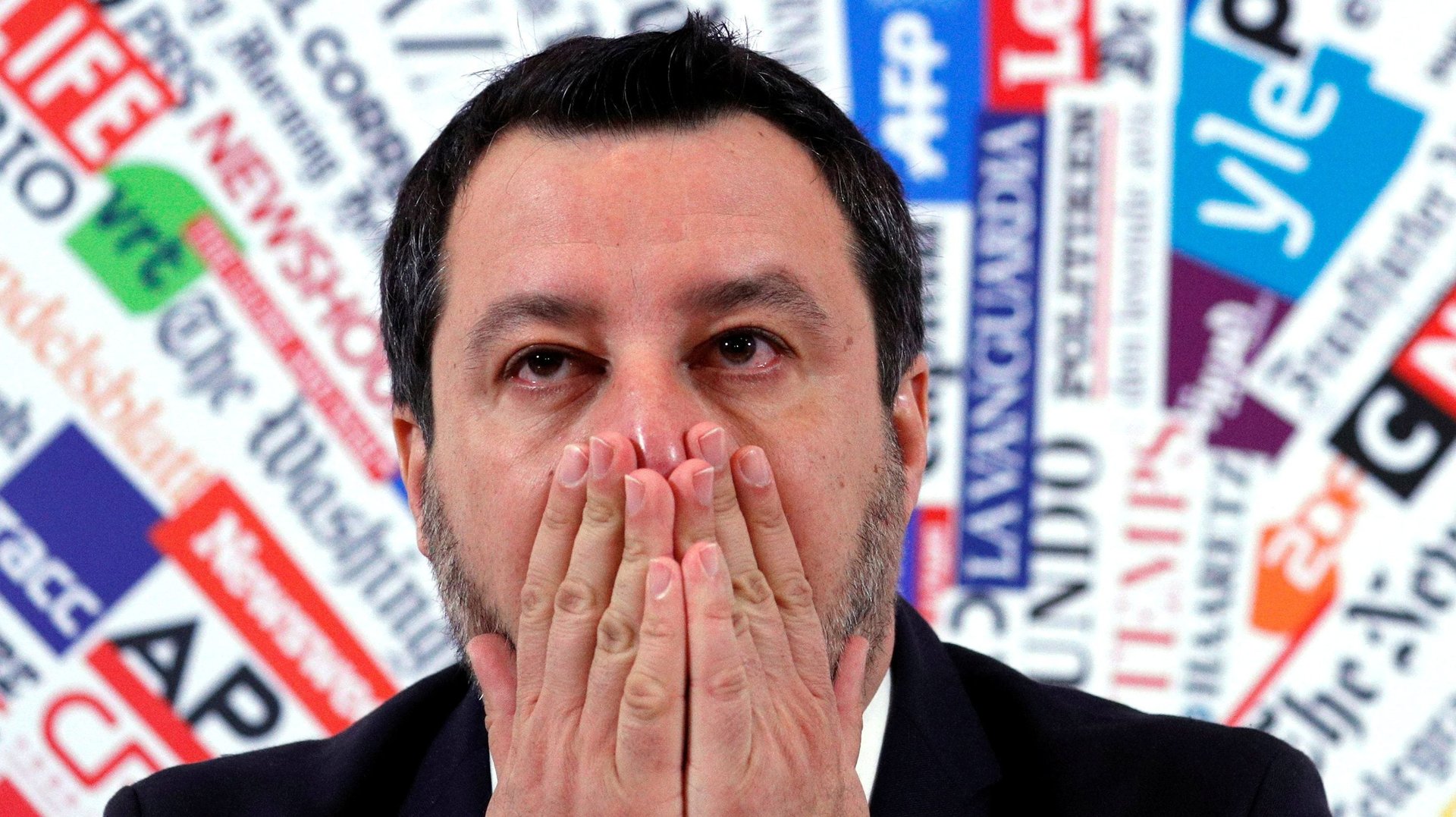Coronavirus is actually hurting Italian fake news and xenophobic propaganda
Italy is in the middle of a war against an enemy that’s both invisible and far too visible in its impact: The Covid-19 pandemic.


Italy is in the middle of a war against an enemy that’s both invisible and far too visible in its impact: The Covid-19 pandemic.
But the Italian right-wing hasn’t been fighting the same war. The true enemies—it has desperately tried to remind its receding base—are visible, and the ones right-wing populists have been demonizing for years: immigrants, and especially those coming into the country from Africa, via sea.
The Lega, the biggest right-wing, xenophobic party in Italy, has long blamed them for Italy’s woes; its leader, the former minister of home affairs Matteo Salvini, built a following as “The Captain,” metaphorically leading Italians in their fight, and growing the party’s support base to the largest in Italy.
But swinging at the usual scapegoats has proved tricky in a new media environment desperate to stick to the facts—and Salvini, Lega, and other far-right platforms are losing popularity in favor of more moderate forces (link in Italian).
Hit by reality
“The coronavirus emergency has somewhat silenced the far right discourse,” Carola Frediani, an author and expert on the relations between politics, online networks, and cybersecurity, told Quartz.
Salvini, she says, is very much ignored on social media—which he has notoriously made a big part of his communication strategy—while prime minister Giuseppe Conte is more present, partly thanks to spontaneous, affectionate memes.
But the far right has certainly tried to keep up the fight.
Propaganda sites like Voxnewsinfo, Viral Magazine, and Secoloditalia have run increasingly far-fetched fake or misleading news in attempt to make a populist story out of a global pandemic.
First, they falsely claimed coronavirus was brought to Africa by the Chinese and from there it reached Italy through the migrants; then, since this narrative failed to account for the overwhelmingly northern concentration of cases, they blamed migrants for drying up resources needed to fight the epidemic; finally they falsely accused the government of hiding cases of Covid-19 among migrants by refusing to test them.
These sites have taken their cue from far-right politicians. As the virus spreads around the western world, so too have racist narratives—for instance, the governor of Veneto (one of the worst-hit regions in Italy) blamed the outbreak on the Chinese’s supposed lack of hygiene (link in Italian), incorrectly suggesting Italians would be safe because of their superior practices.
“This is part of an ideology that is trying to get hold of the country,” Federico Finchenstein, a professor at the New School University in New York, who most recently authored A Brief History of Fascist Lies, told Quartz. It is in line with the behavior of authoritarian and fascist regimes, he adds, as “these are people who have no problems manipulating the truth.”
But this time the lies might have led to a false perception of safety, putting followers of far-right leaders in danger of getting sick and giving them tangible evidence that they were being lied to. “When do people see that the emperor is naked?” Finchenstein wondered, “perhaps when reality hits hard.”
Once its political backing is questioned, the propaganda machine stutters—and it did. “In Italy these sites have had no success if they are explicit repositories of fake news,” Francesco Pierri, a researcher who studies misinformation at Politecnico di Milano, told Quartz.
By tracking keywords and hashtags on Twitter, Pierri says that obviously-fake coronavirus stories have had little impact, despite a daily deluge of such content. The exceptions are rumors that are harder to fact-check and risk getting picked up by mainstream media.
“All things considered, disinformation sites don’t reach that many readers, compared to established media,” Frediani said. “It’s more complex when the news is not so easy to verify.”
Person-to-person transmission
But if fake news has little power of persuasion on websites and social media, it still has some hold on person-to-person channels like WhatsApp. The app is very popular in Italy, where people often discuss and access news through distributed lists.
“WhatsApp is where the fake news is,” said Pierri, adding that messages among more intimate groups benefit from what he calls a “halo of trust.” He points to a social media hype machine designed to amplify Salvini’s populist brand. The group, led by a team of digital experts who curate Salvini’s messaging across Facebook, WhatsApp, and Telegram messages, is informally known as “The Beast.”
Via WhatsApp, Italians have been sharing numerous coronavirus falsities, like claims by a spurious doctor that holding your breath can cure Covid-19, or that ibuprofen aggravates the virus and should be avoided (the World Health Organization says there’s no evidence supporting this).
But data from Facebook, which owns all three platforms, isn’t publicly available. That’s left researchers at a loss for cracking what goes on behind the scenes of WhatsApp groups.
“We are maybe missing the big picture, these other attacks are these small messages, sometimes three, four lines, on WhatsApp,” Pierri said. “We have no idea how to monitor that kind of stuff.”
Annalisa Merelli is a Quartz geopolitics reporter. Luca Powell is part of an investigative reporting class collaborating with Quartz at the Craig Newmark Graduate School of Journalism at the City University of New York.